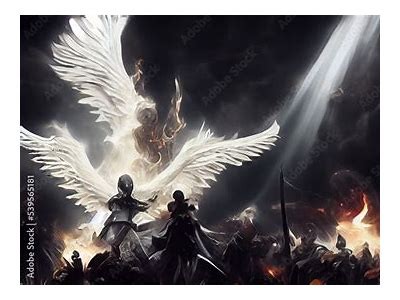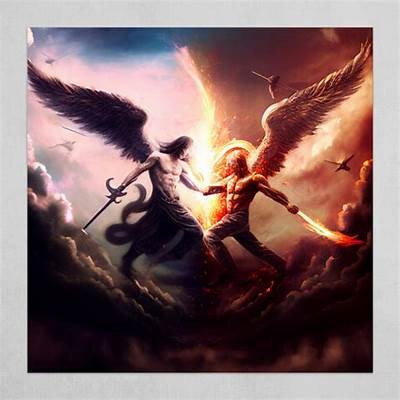Angel vs Sinner Live Performance: A Captivating Battle Between Good and Evil
In the realm of performance art, few themes resonate as deeply as the eternal struggle between good and evil. This is masterfully showcased in the live performance titled "Angel vs Sinner." The performance merges theatrical storytelling, stunning visual effects, and captivating choreography, inviting the audience to explore the complexities of morality and the human condition.

Setting the Scene
The stage is set in an ethereal ambiance, bathed in contrasting lights of bright whites and deep blacks, symbolizing the dichotomy of the characters. On one side, we have the Angel, portrayed by a classically trained dancer whose movements are fluid and graceful, embodying purity and hope. Opposite her, the Sinner, a figure shrouded in darker, edgier choreography that conveys restlessness and rebellion against the constraints of societal norms.

The Characters
The Angel character exudes a sense of calm and serenity. Dressed in flowing garments that shimmer as they catch the light, she represents virtue and enlightenment. Her dance is interspersed with moments of interaction with the audience, pulling them into her narrative of compassion and love. Conversely, the Sinner's portrayal is raw and visceral; clad in darker, more jagged attire, his movements are aggressive and frenzied, almost chaotic, symbolizing the struggle of temptation and vice.

Choreography and Dance Elements
The choreography plays a pivotal role in conveying the themes of good versus evil. The two dancers engage in a fluid dialogue through movement, intertwining their styles. The Angel's sequences are characterized by ballet influences, with leaps and turns that create an air of ethereal beauty. In contrast, the Sinner employs elements of street dance and contemporary forms, emphasizing isolation through sharp movements and staccato rhythms that starkly contrast the Angel’s fluidity.

Musical Accompaniment
The score for "Angel vs Sinner" is an eclectic mix of orchestral and electronic elements. The music crescendos and decrescendos seamlessly, echoing the tension between the two characters. The use of choral backgrounds during the Angel's segments evokes a sense of divine presence, while the Sinner’s sections are amplified by heavy beats, mirroring his internal chaos.

Visual Effects and Stage Design
Visual effects elevate the performance, immersing the audience in the battle of forces. Projections of abstract imagery flood the backdrop, shifting from serene landscapes during the Angel's reign to chaotic, urban chaos during the Sinner's moments. Additionally, the creative use of lighting—from soft spotlights that highlight the Angel to sharp strobe effects that accompany the Sinner—enhances the emotional impact on the audience.
Thematic Exploration
"Angel vs Sinner" is not just a visual spectacle but a thought-provoking exploration of morality. It encourages the audience to reflect on their own beliefs about good and evil, challenging them to recognize that these concepts are often not black and white. Throughout the performance, we witness the Sinner’s moments of vulnerability, revealing the complexities of human nature, while the Angel's strength is juxtaposed with her struggles to uphold ideals in a world filled with temptation.
Audience Engagement
One of the standout elements of the performance is its attempt to engage the audience directly. Throughout the show, moments arise where the Angel reaches out to the crowd, inviting them to partake in her message of hope. The Sinner, on the other hand, provokes the audience’s darker instincts, inviting them to confront their own sins and desires. This dual engagement creates a powerful connection between the performers and the audience, making them reflect on their positions in this battle.
Cultural Significance
The battle between good and evil is a universal narrative present in countless cultures and stories. "Angel vs Sinner" draws on these traditions, incorporating elements from various mythologies and religious teachings. By doing so, it not only entertains but educates the audience about the diverse interpretations of morality across cultures, making it relevant to a global audience.
Conclusion: The Timeless Battle
In conclusion, "Angel vs Sinner" is more than a performance; it is an experience that stirs deep contemplation about the nature of human existence. It captivates through its innovative choreography, powerful music, and striking visuals, but more importantly, it invites us to reflect on our moral compass. As the curtain falls, the individuals in the audience are left with a question: Where do they stand in the age-old battle between good and evil?
The performance encourages a deeper understanding of morality, not as an absolute but as a spectrum, reminding us that every person embodies elements of both the angelic and the sinful.
Reflection and Future Directions
As we look to future performances, the potential for expanding such narratives is vast. The integration of new technologies—like augmented reality or artificial intelligence—could further enhance the immersive experience of productions like "Angel vs Sinner." By continuing to innovate in terms of choreography, music, and audience engagement, artists can keep the dialogue around good and evil alive and relevant in contemporary society.
Final Thoughts
Ultimately, "Angel vs Sinner" serves as a reminder that the struggle between good and evil is not just a story confined to the stage; it is a reflection of the ongoing battle within each of us. The power of performance art lies in its ability to bring these internal conflicts to the forefront, allowing us to explore and question our beliefs in a shared space. As audiences continue to engage with such performances, the dialogue surrounding morality will undoubtedly thrive, inspiring new interpretations and understandings for generations to come. ```